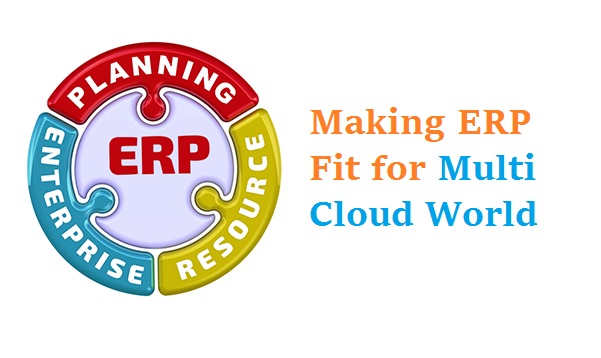When you use two or more than two cloud computing models, you are said to be using a multi cloud strategy. Multiple cloud deployment earlier referred to the running of various kinds of software like IaaS, SaaS and PaaS but now it refers to mix of public IaaS like Azure and AWS. With Enterprise Resource Planning or ERP technologies growing more complex by the day, IT executives are expected to have the flexibility to run applications only where they are needed. This has led to the emergence of multi cloud environments. IT leaders are therefore able to select hosting environments depending on factors like operational efficiency, cost and convenience. According to reports by Gartner, the multi-cloud strategy is all set to engulf about 70% businesses by the end of the next year. Multi clouds have the power to run key business applications that need interactions with hybrid architectures.
Many businesses have started to modernize their ERP frameworks to adapt to the newly evolving technologies. To get this right, it is very important to realize that proper planning alone will guarantee a successful result. No matter whether you run the Oracle or AWS or SAP, every application is needed and you cannot afford to experience downtimes when you shift these to the cloud. So, before you choose a multi-cloud approach, your job is to plan ahead, assess where the applications should ideally reside. The best part about choosing a multi-cloud strategy is that it will let every application reside on the platform is it suited for. So, your task will be to analyze the strengths of each platform and then decide which applications will run best on it. So as to avoid any chance of downtimes, you should determine the amount of time you will need to shift the applications and costs of transition involved. It is advisable to employ unified management techniques for ensuring that this transition is free of risks. You are also expected to prioritize security arrangements during this transition process. So, comprehensive planning efforts will help you achieve a smooth transition and if you can sign up with a reputed provider, the shift to multi-cloud approach become even easier.
Perhaps one of the leading problems which businesses face in assembling a multi-cloud environment is data migration. Data must not only be shifted; it has to be integrated within specific applications. So, it is important to carry out an audit of the data beforehand. You should then execute a cloud-readiness test for these applications. You will be able to evaluate the applications and the infrastructure to see how ready the data is for transition to the cloud. During this data migration process, you get a great opportunity to clean up all pre-existing applications. You get the chance to review your cost structure and identify the best platforms for the multi-cloud environment. When your evaluation is complete, data should be prioritized according to importance in a tier format. So, you will know which data has to be migrated definitely by go-live date and which data you can archive or which data sets can be kept waiting to be converted.
When you choose a multi cloud world it implies that there will be multiple services providers and managing them can prove to be a big challenge. You will be keen to use all benefits of the cloud and try to keep a balance between using technologies and oversight. This balance between innovations and governance needs to be identified when you are serious about a multi cloud strategy. And to get this right, training can be a big help. Transferring knowhow in the early stages is very necessary. It is imperative to ensure that your employees have a proper orientation so that they are properly trained and equipped with skills to deploy a multi-cloud ERP framework. To make this easier for your staff you should seek help from applications service providers.
A multi-cloud strategy is here to stay and companies, who have not made the transition as yet, will do it eventually. So, you need to get your plan of action in place when the time comes. You are likely to enjoy operational efficiencies of a much higher degree in that case and you can establish the foundation for the new wave of digital changes. When your business is keen to stay in the competition and get maximum returns on investments, a multi-cloud ERP system can be its best bet.
For Interesting Topic : Essential Attributes of a Multi-cloud Strategy






 Live Chat
Live Chat